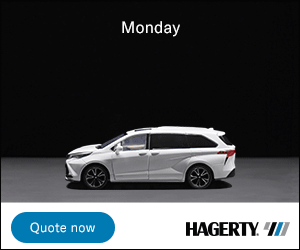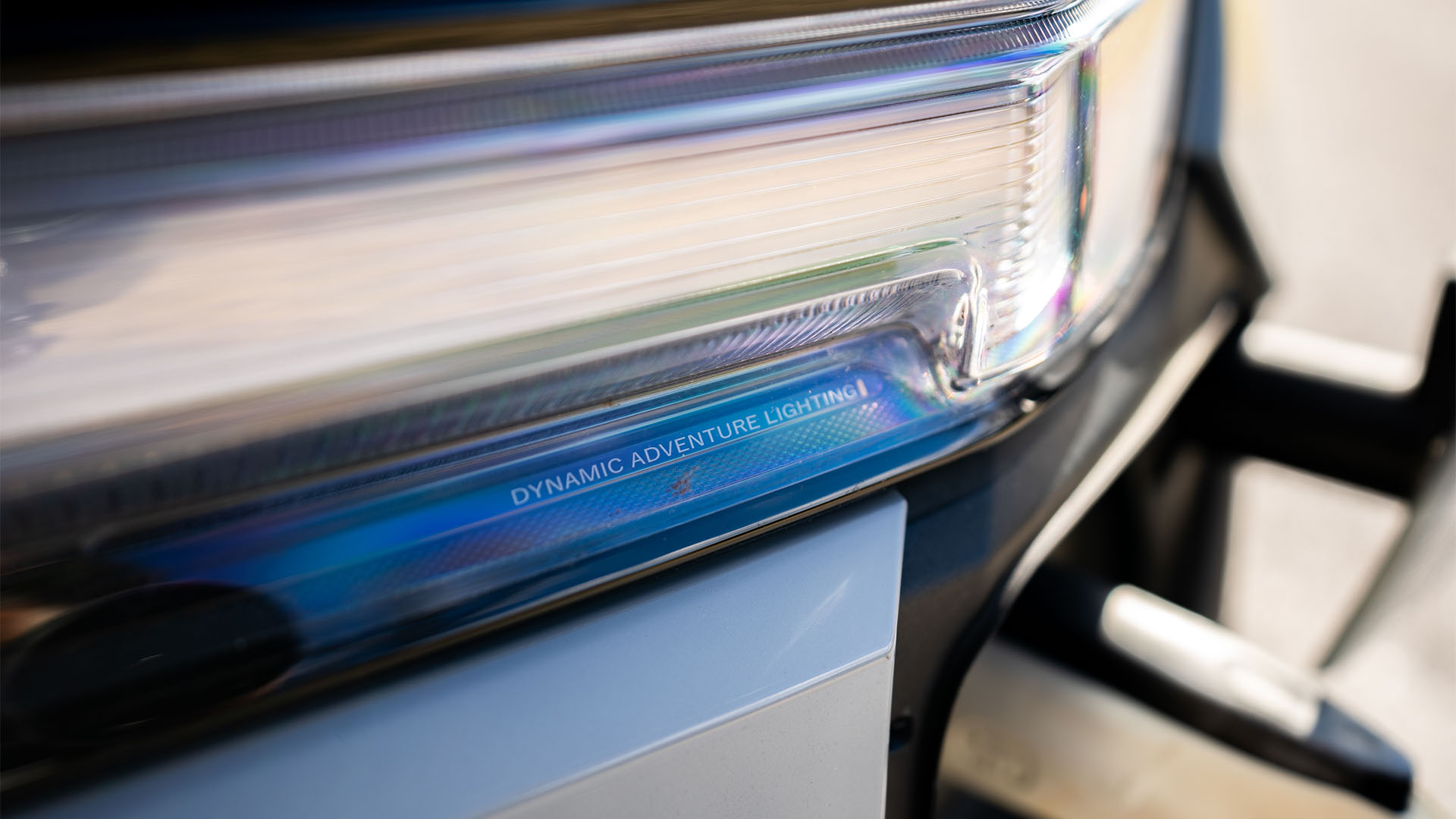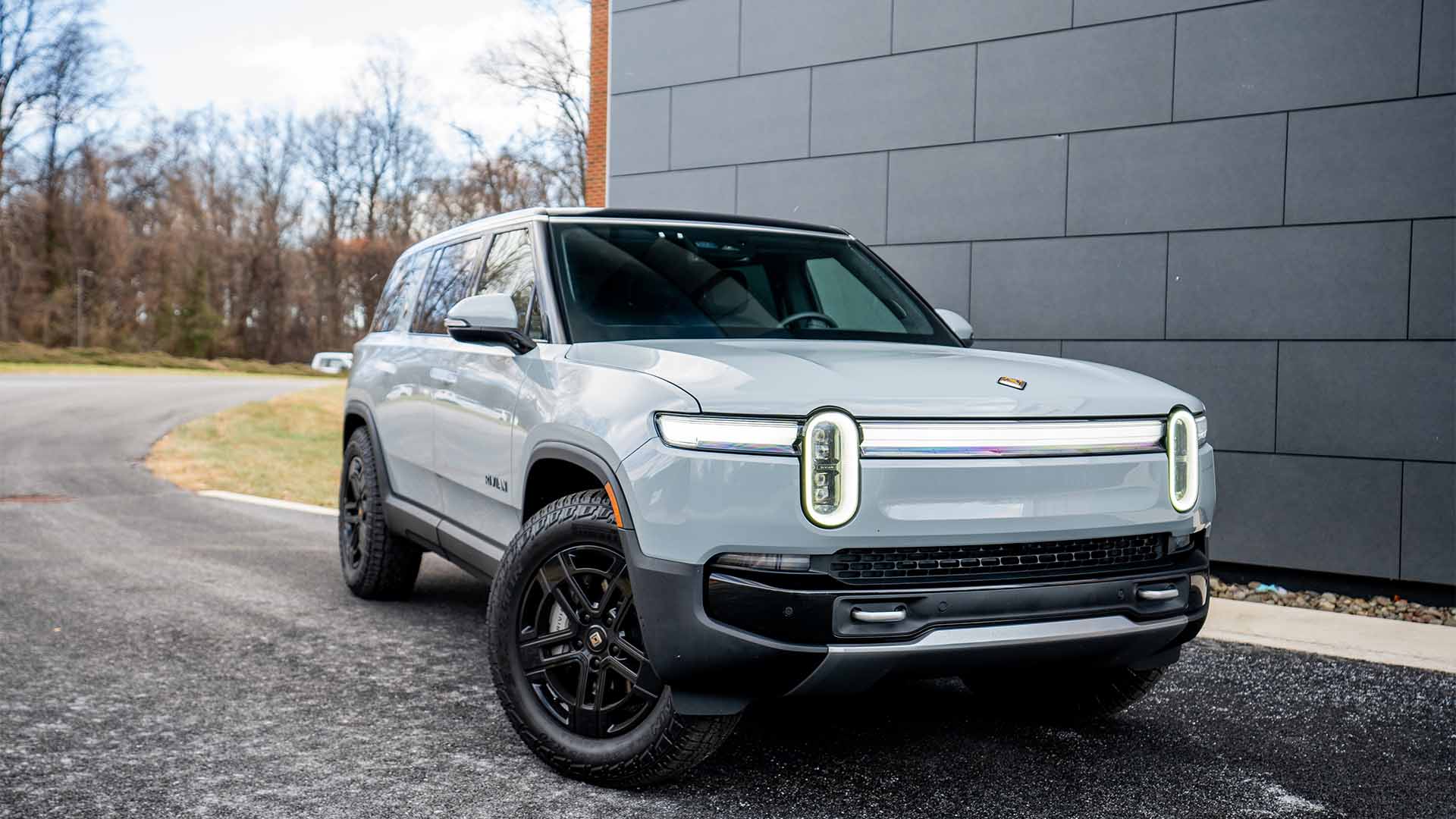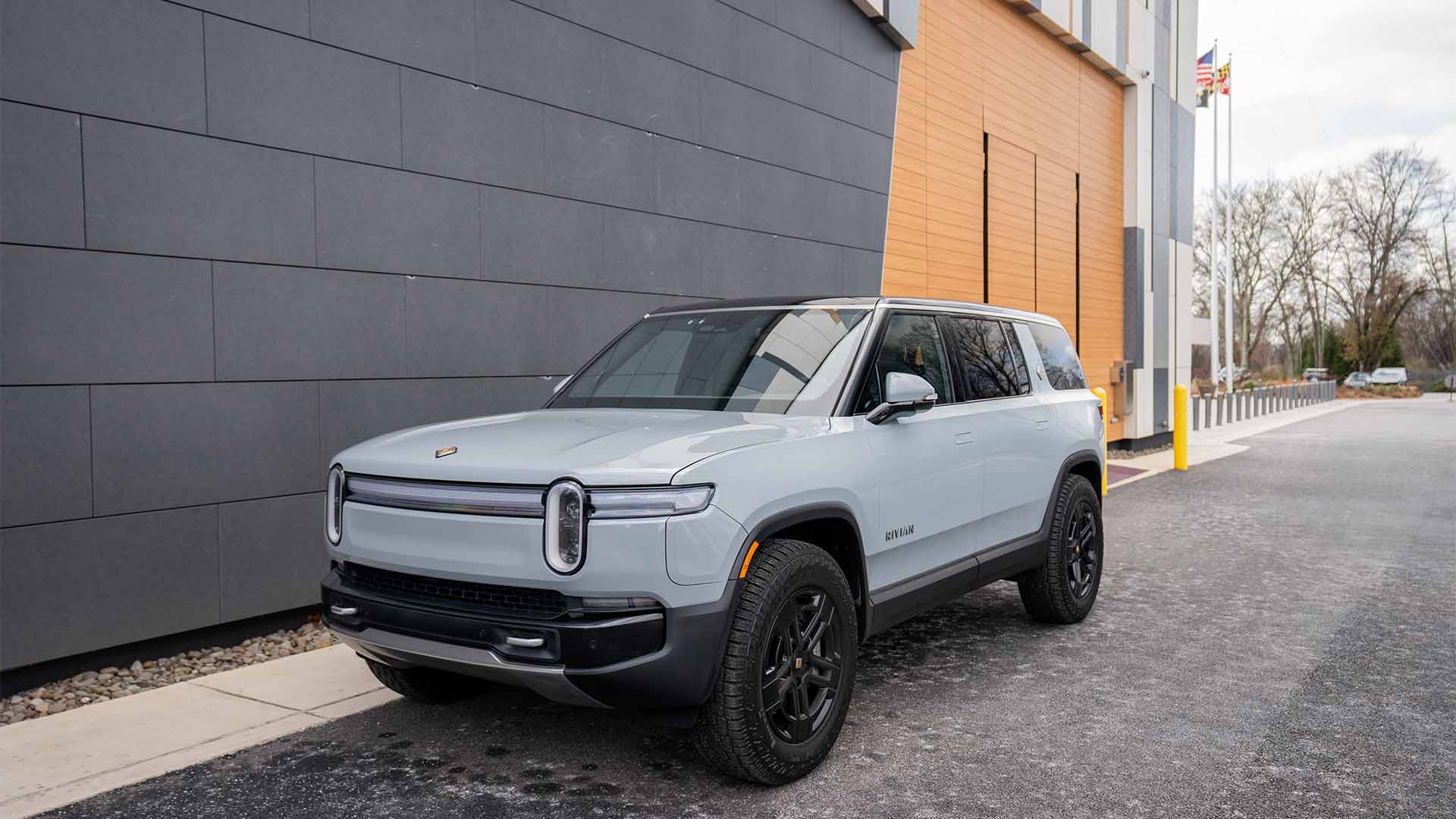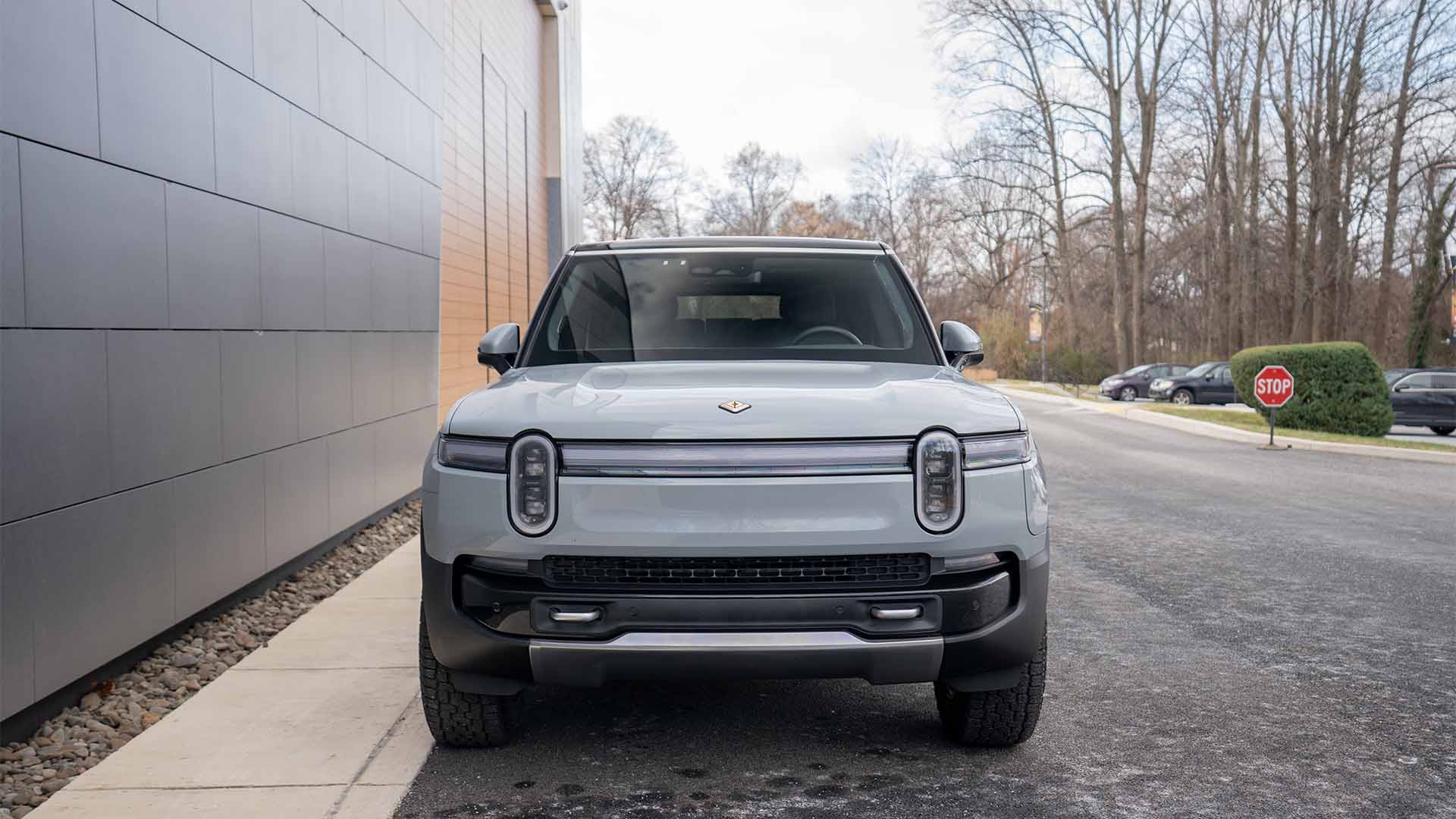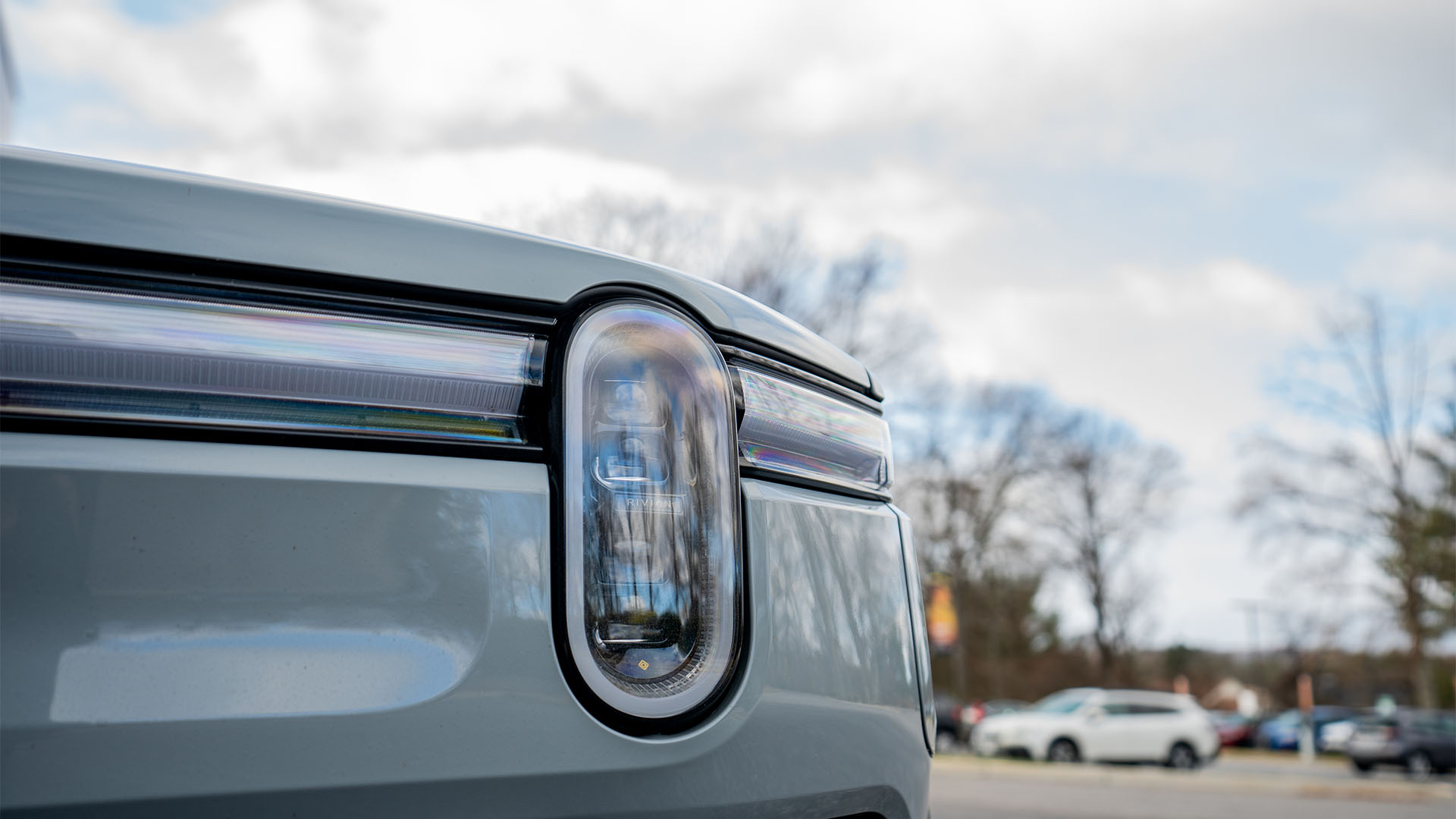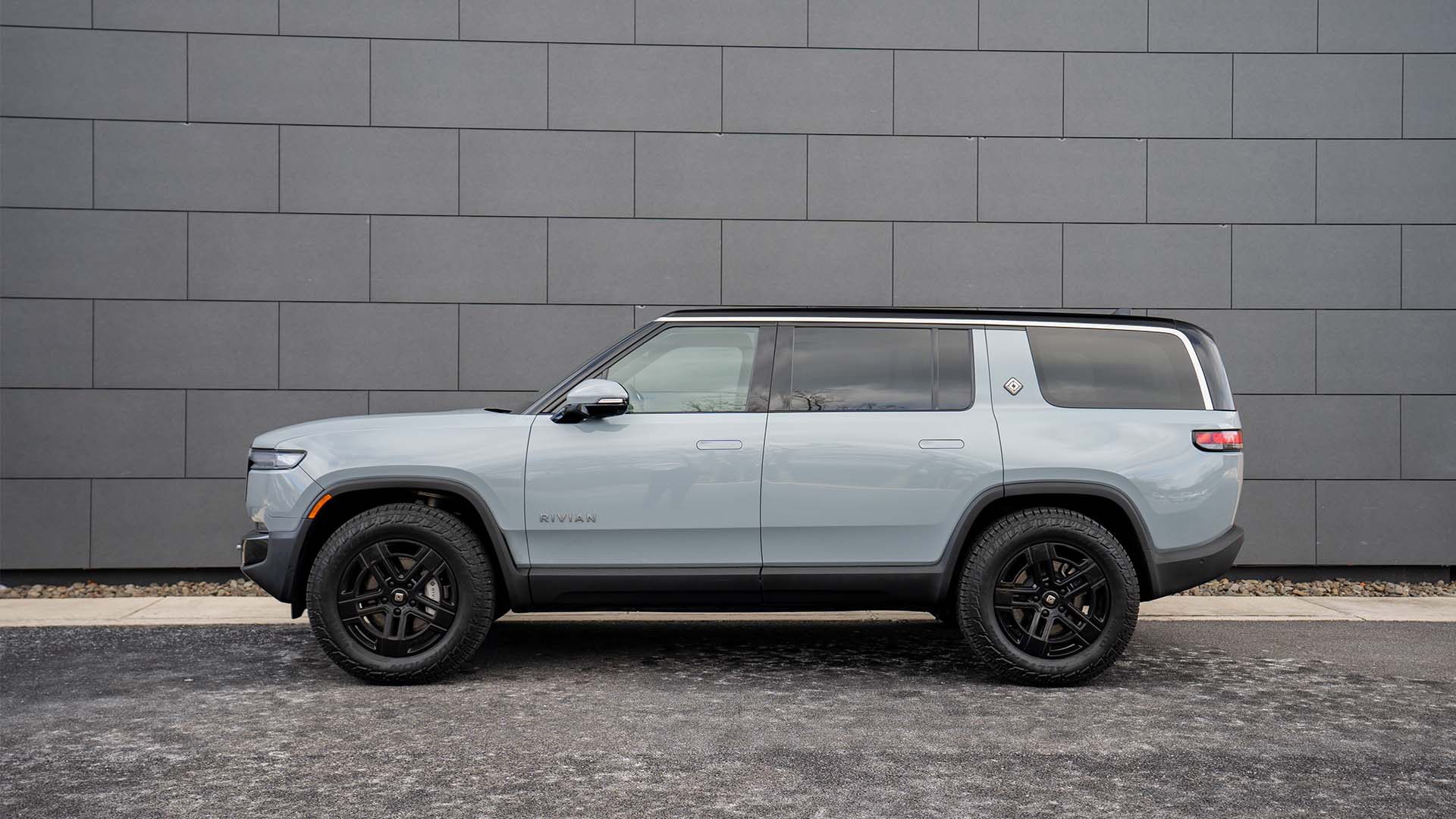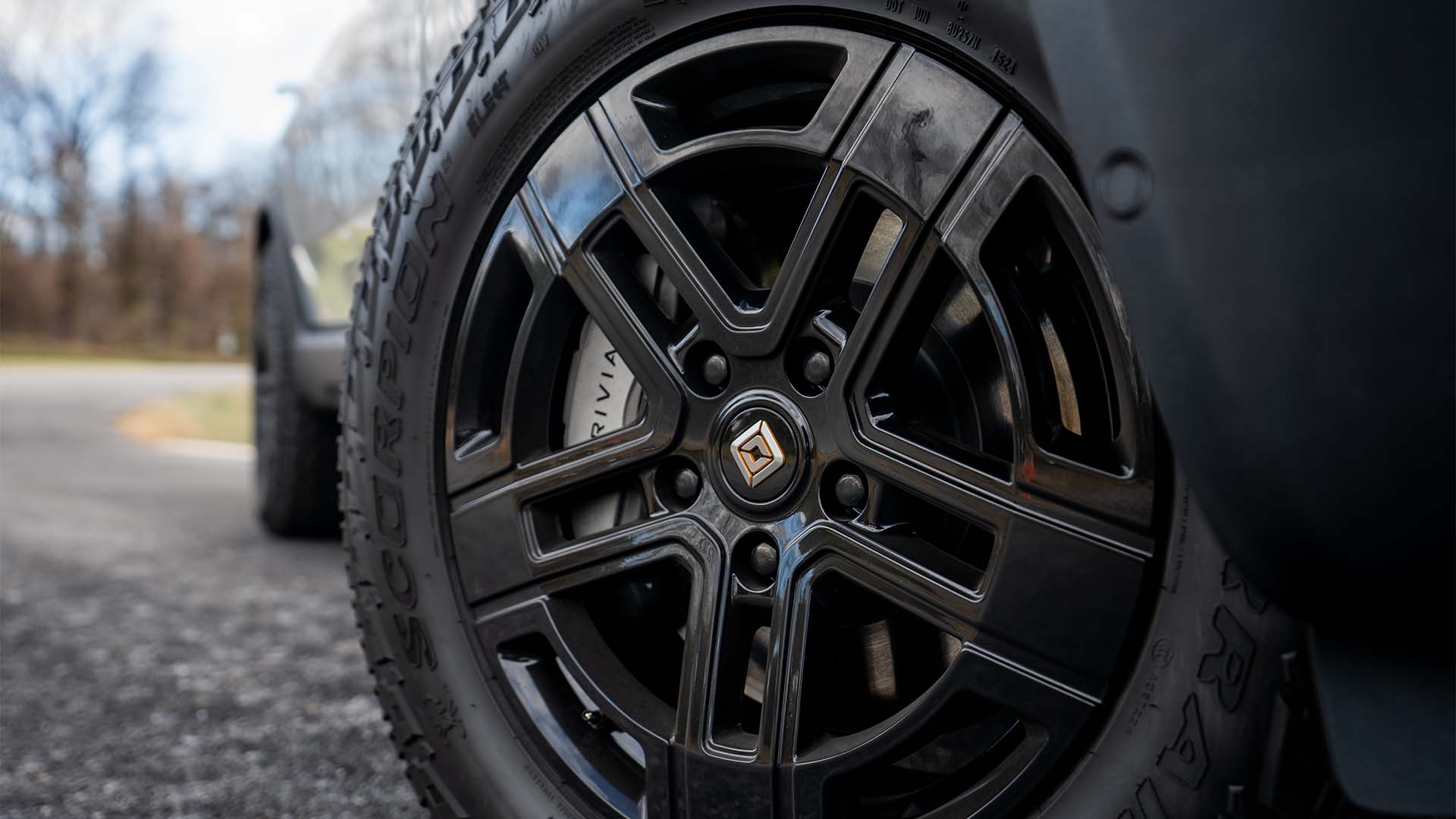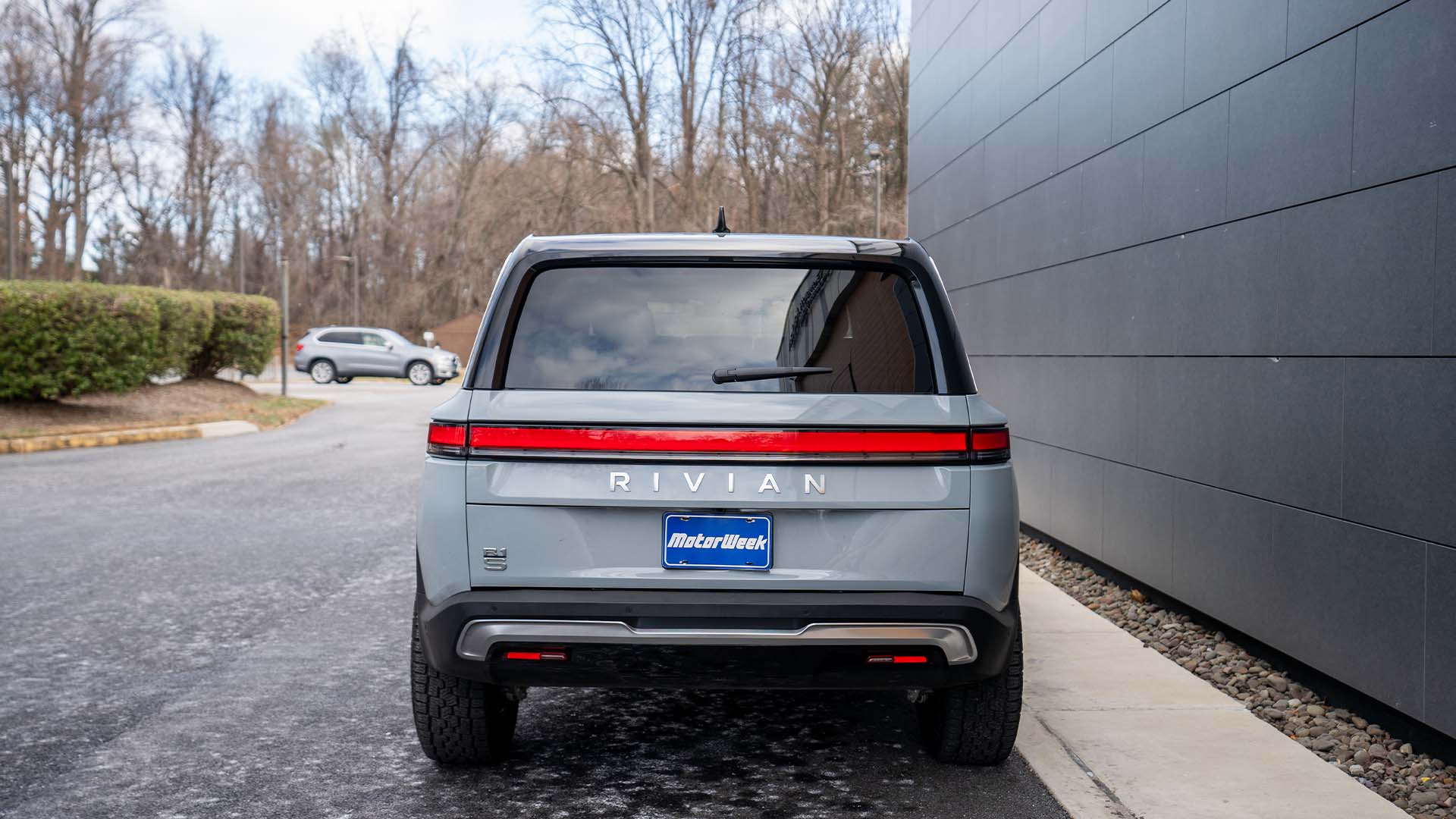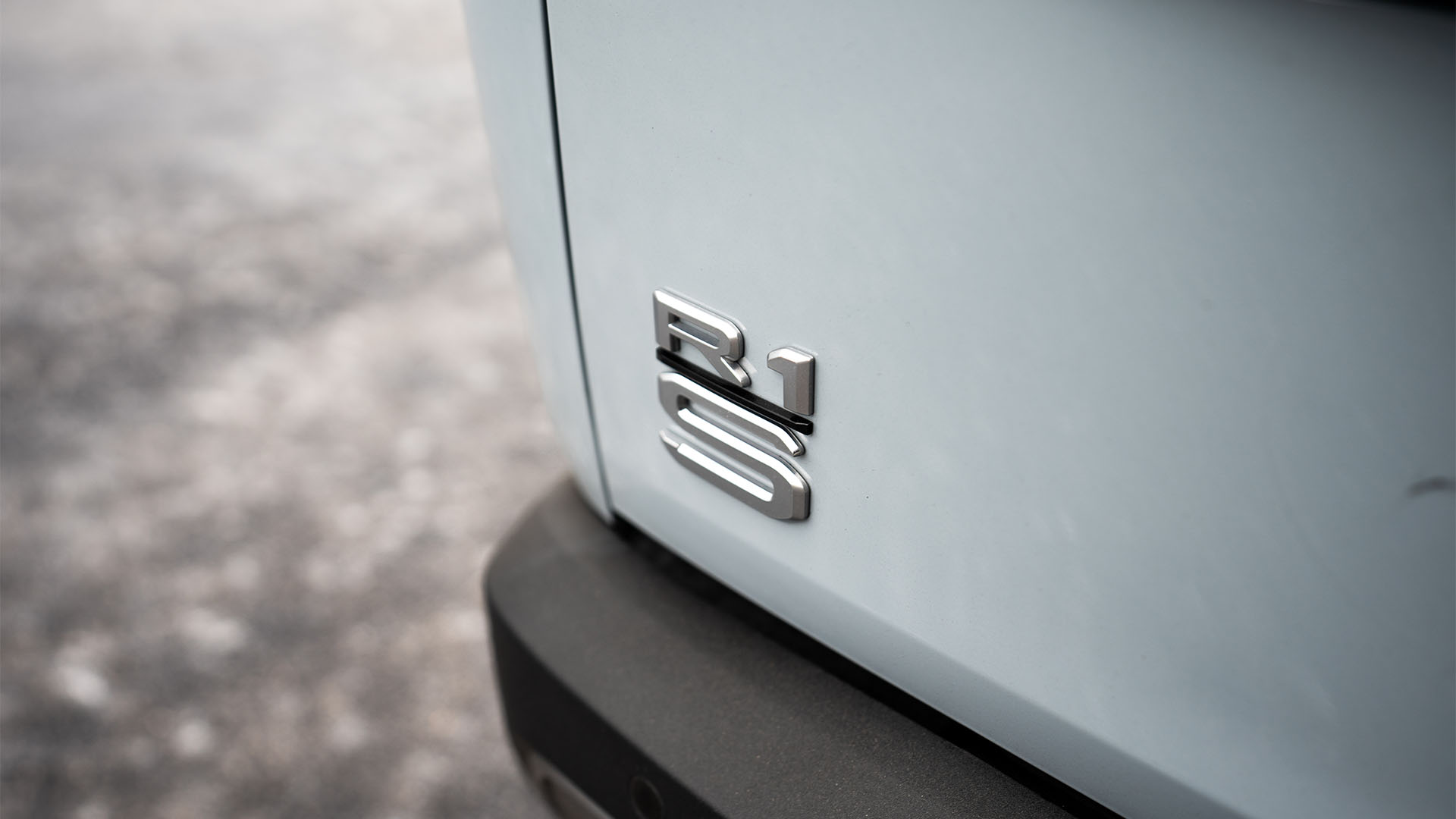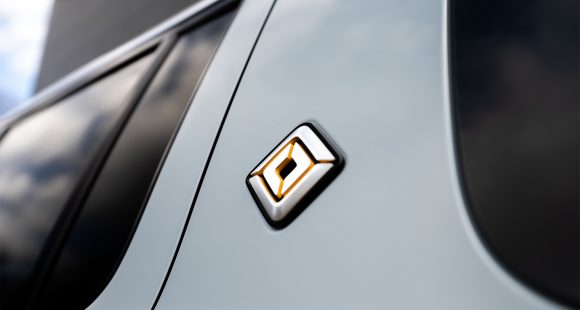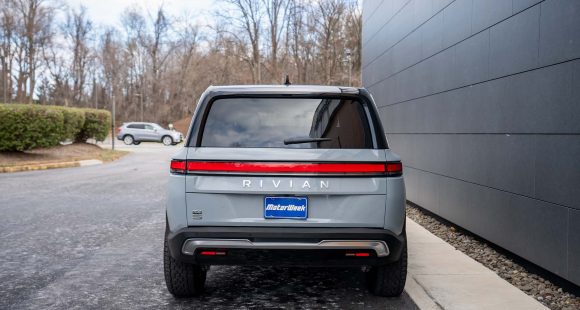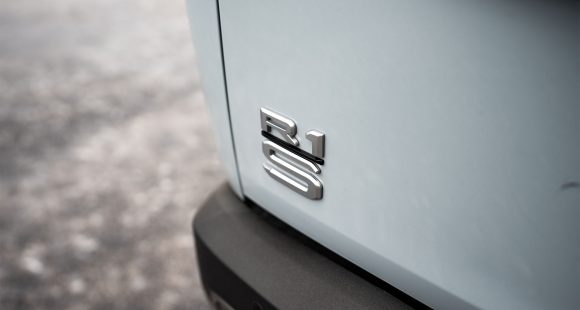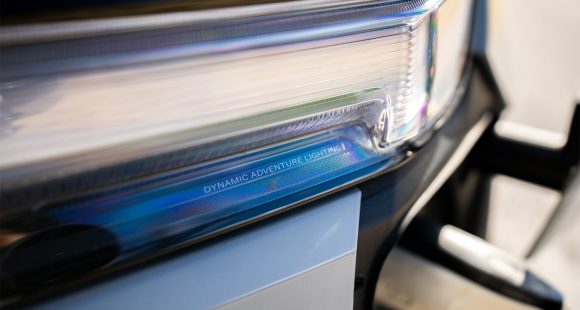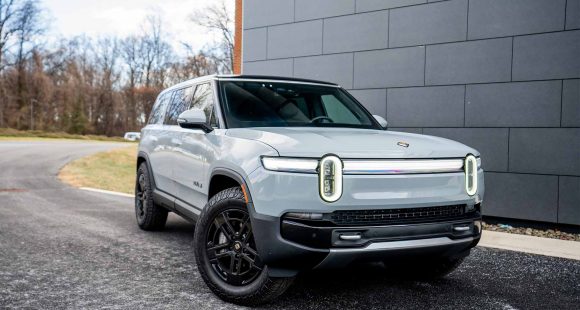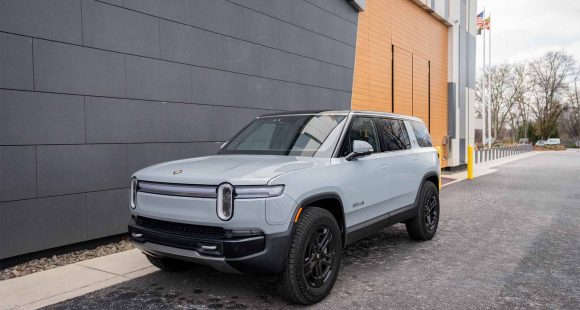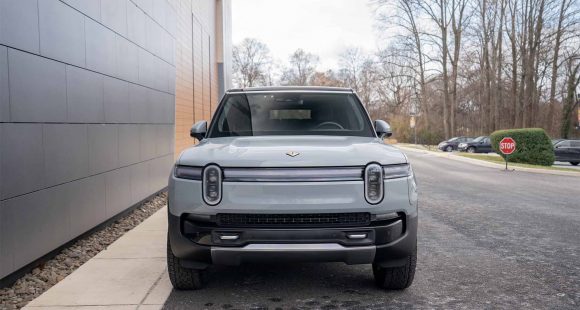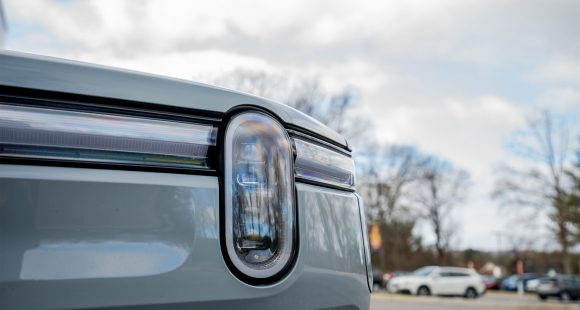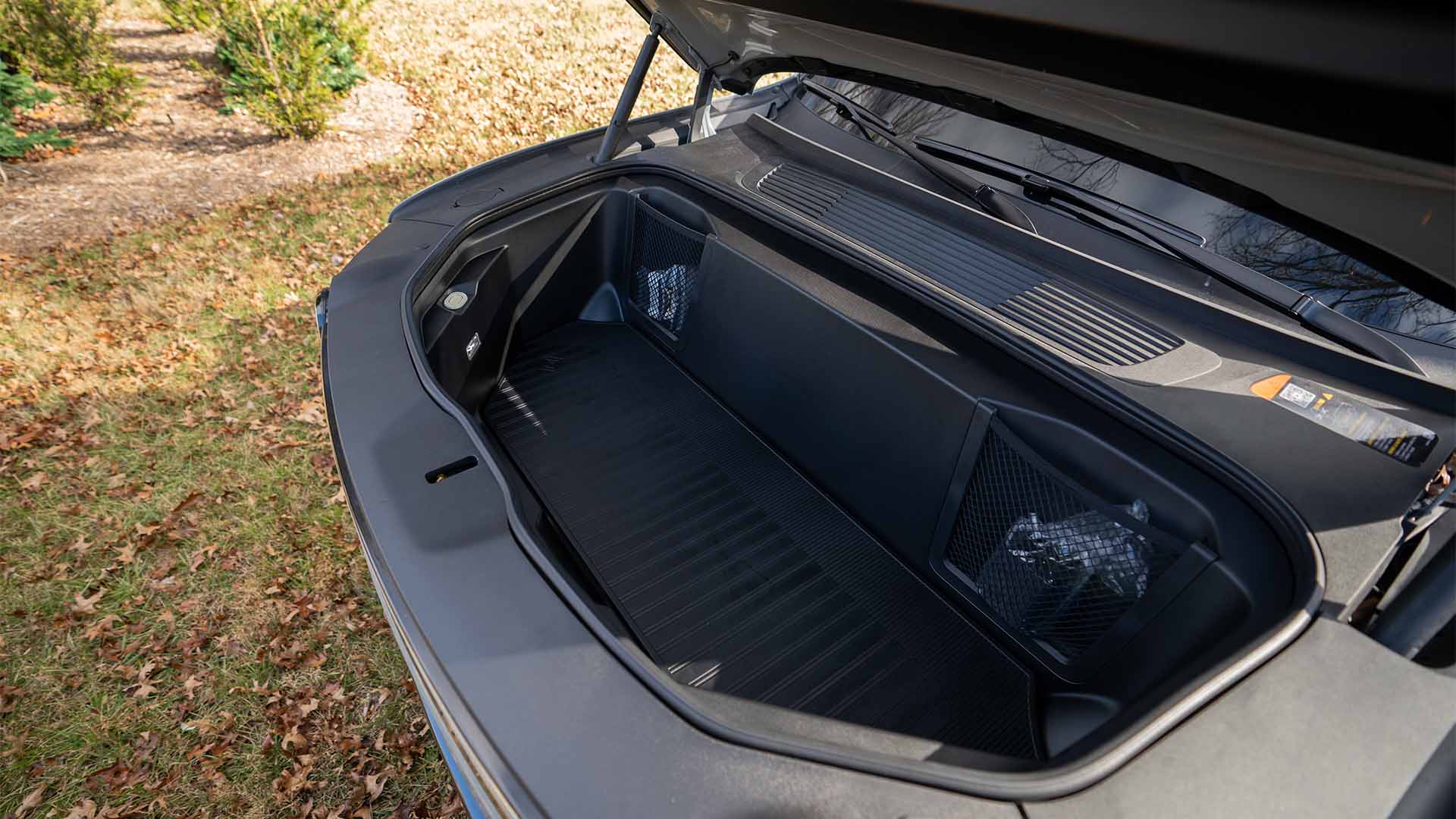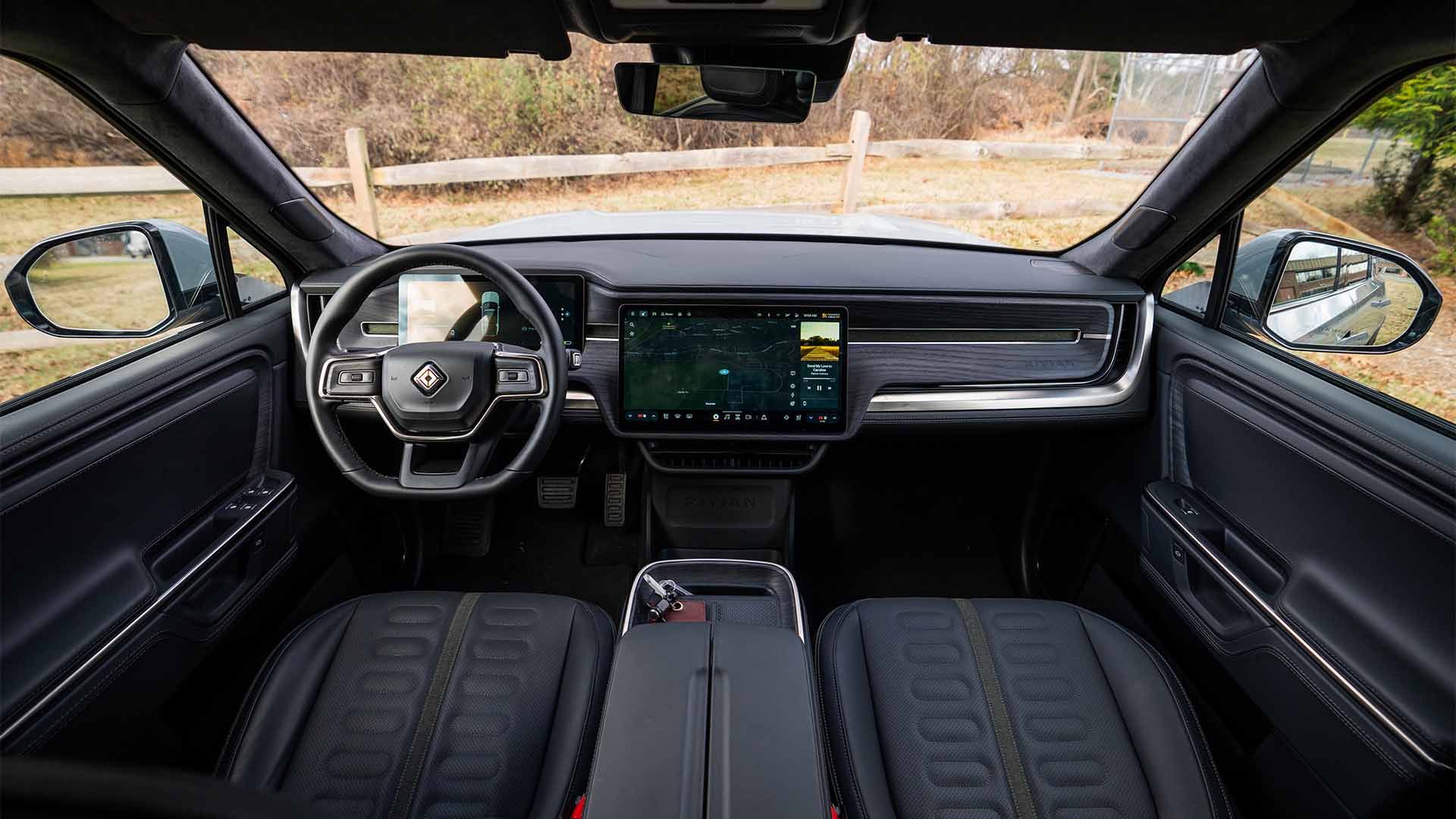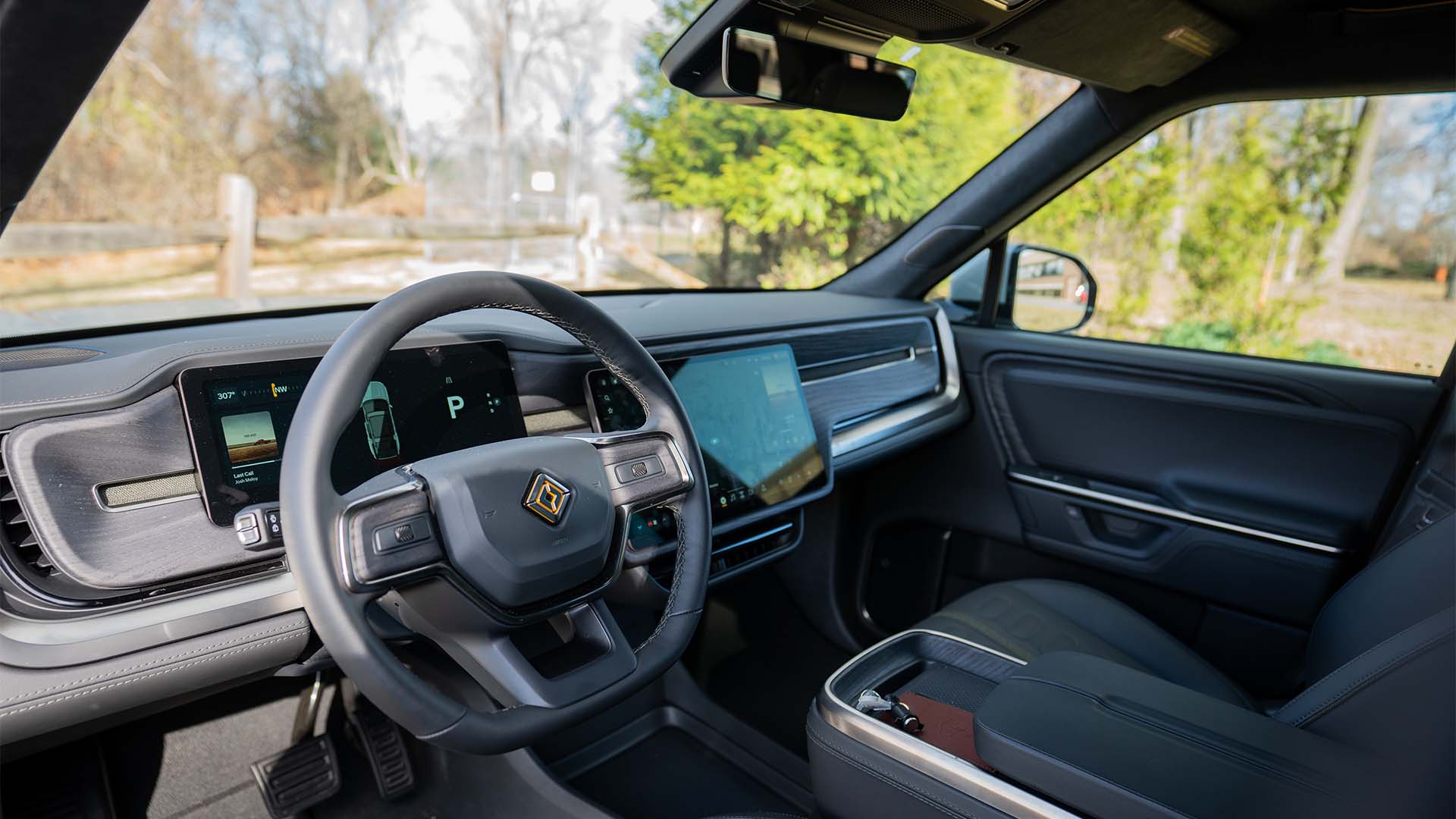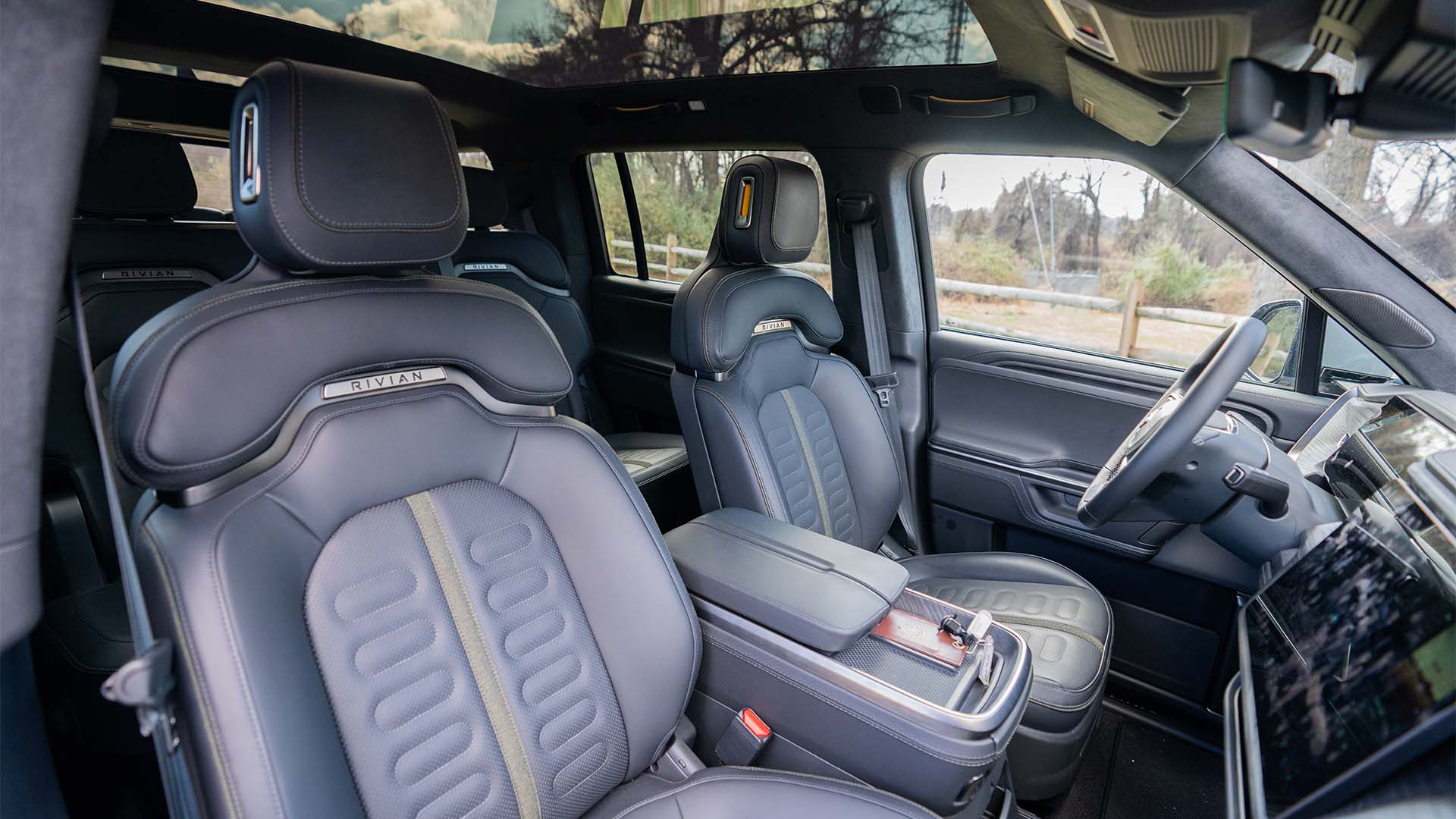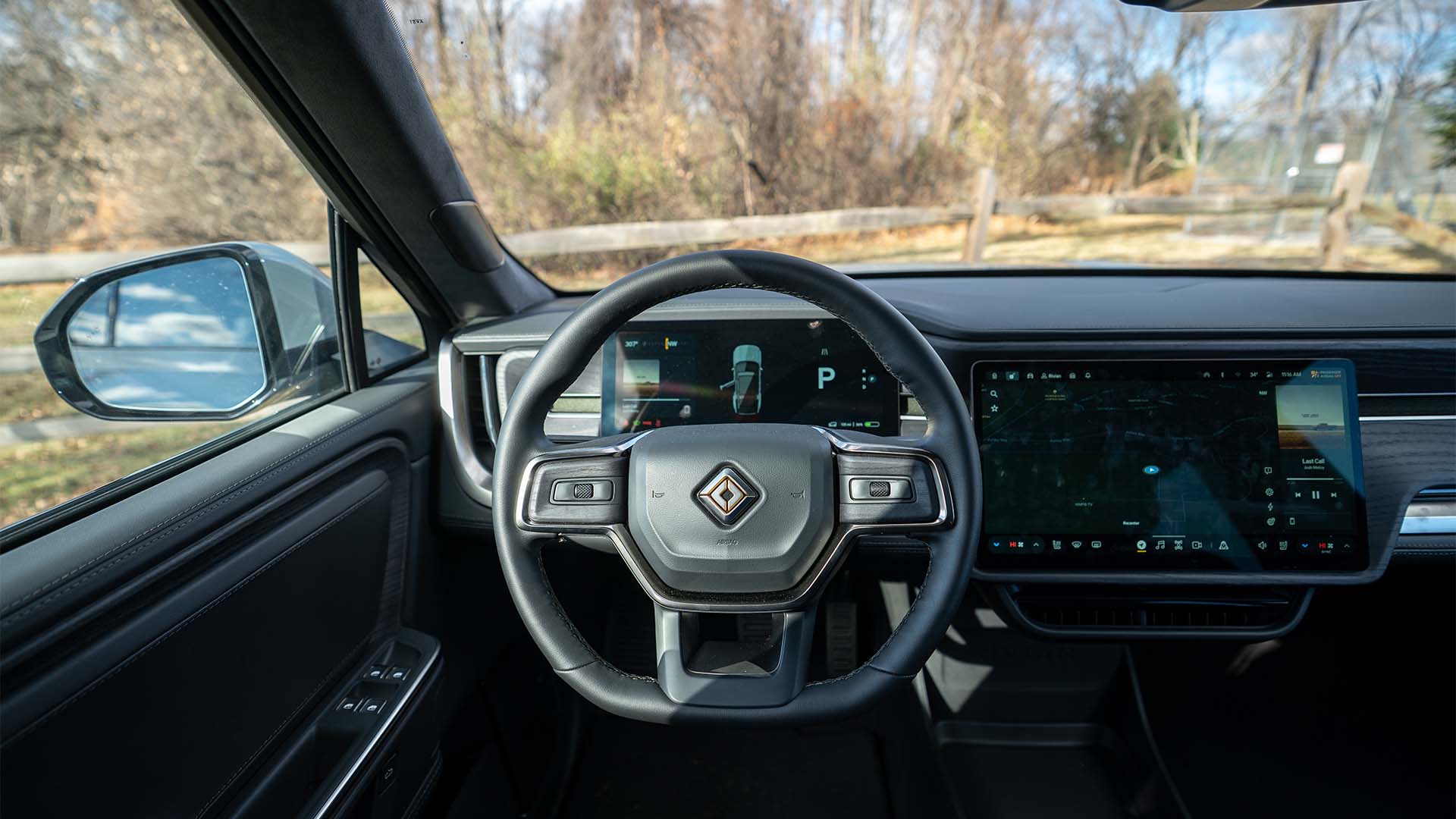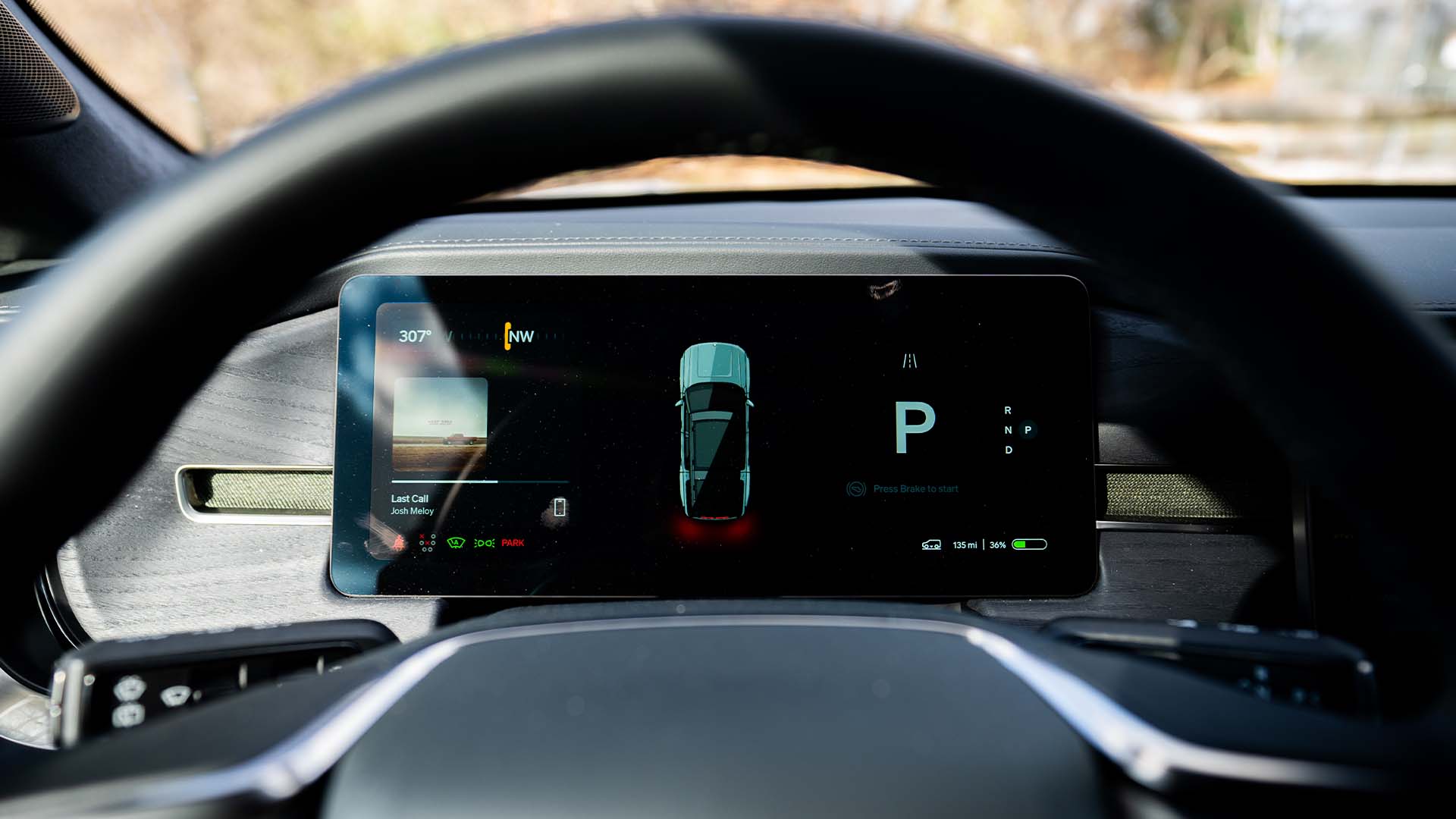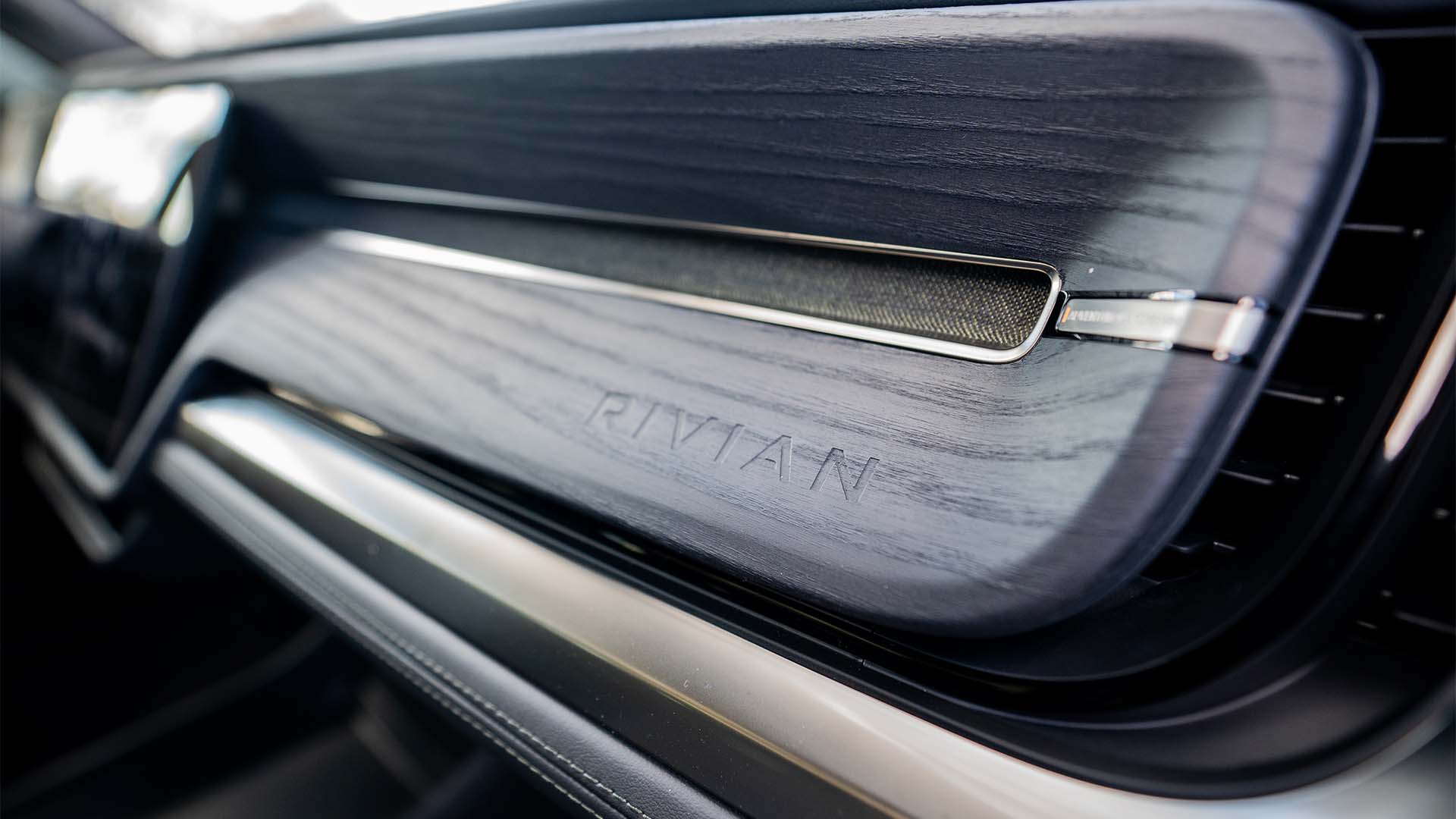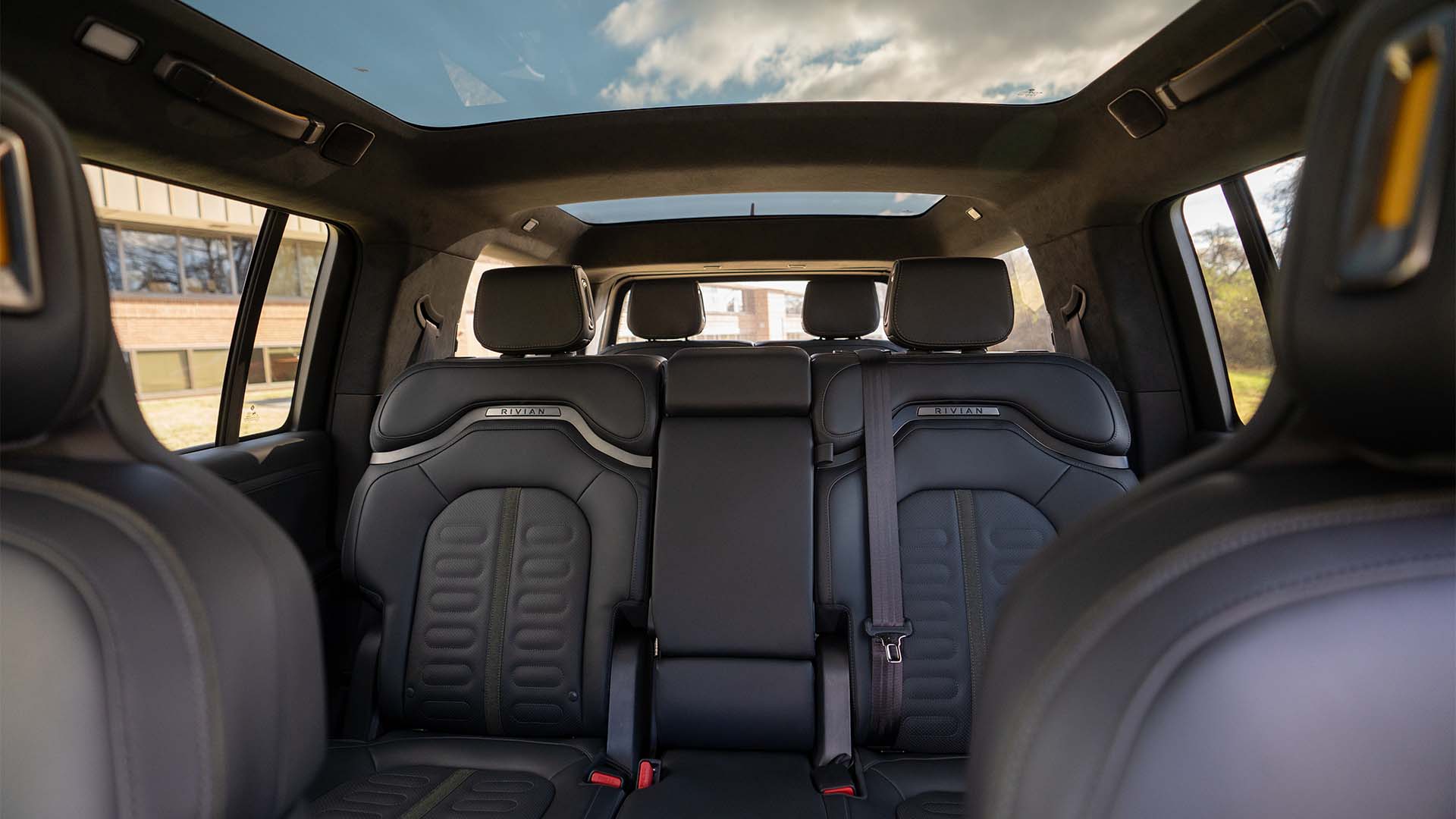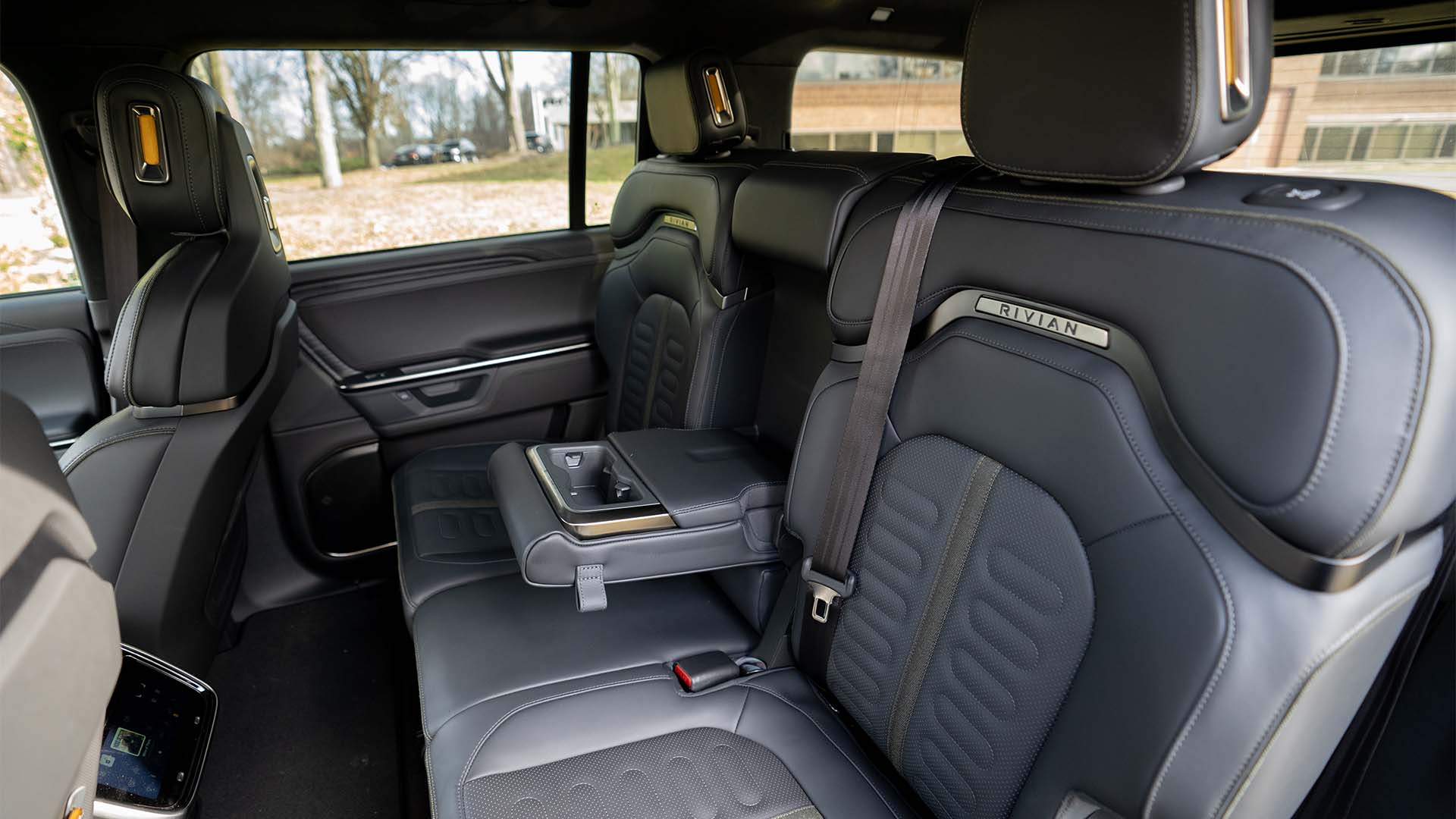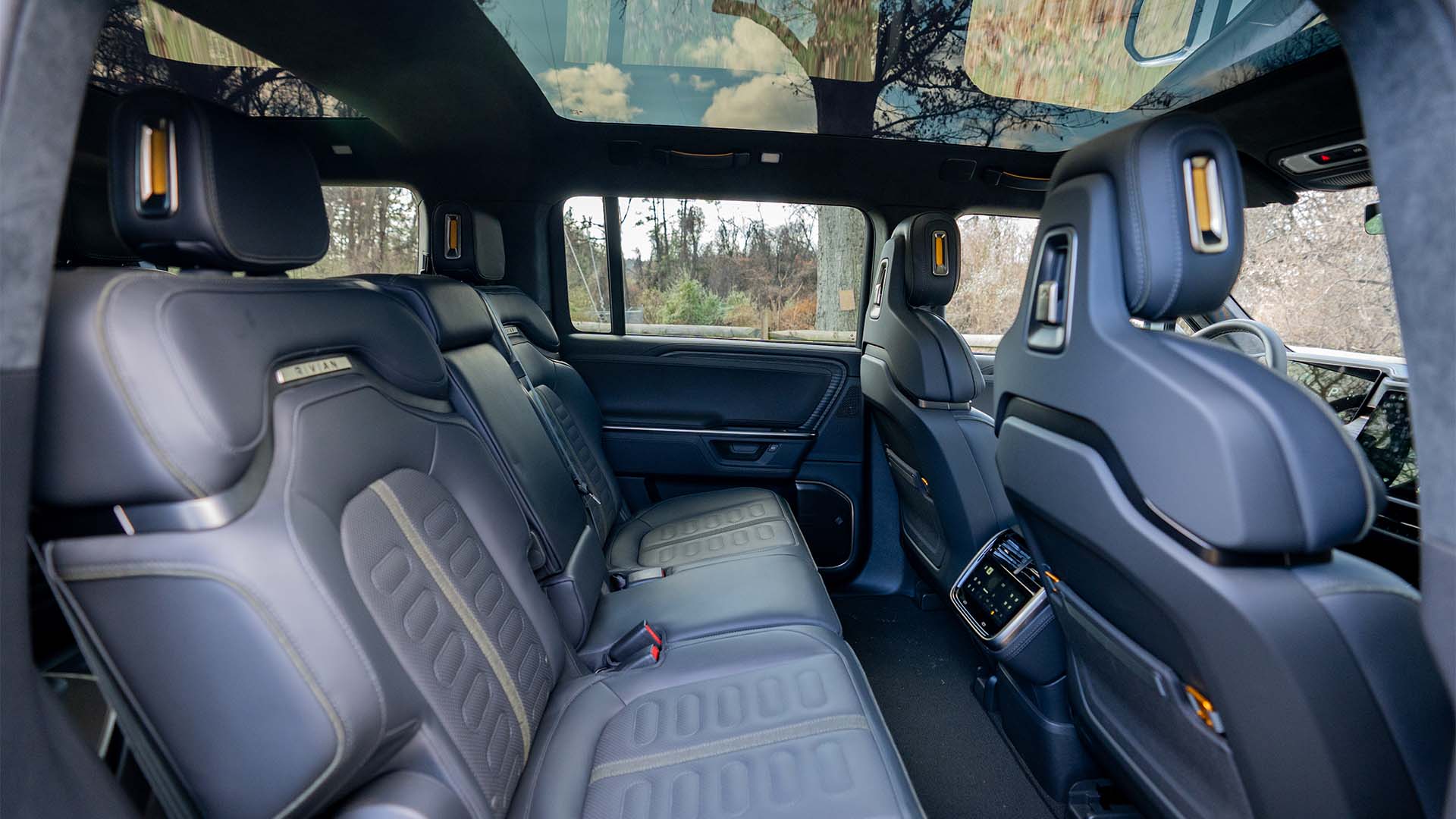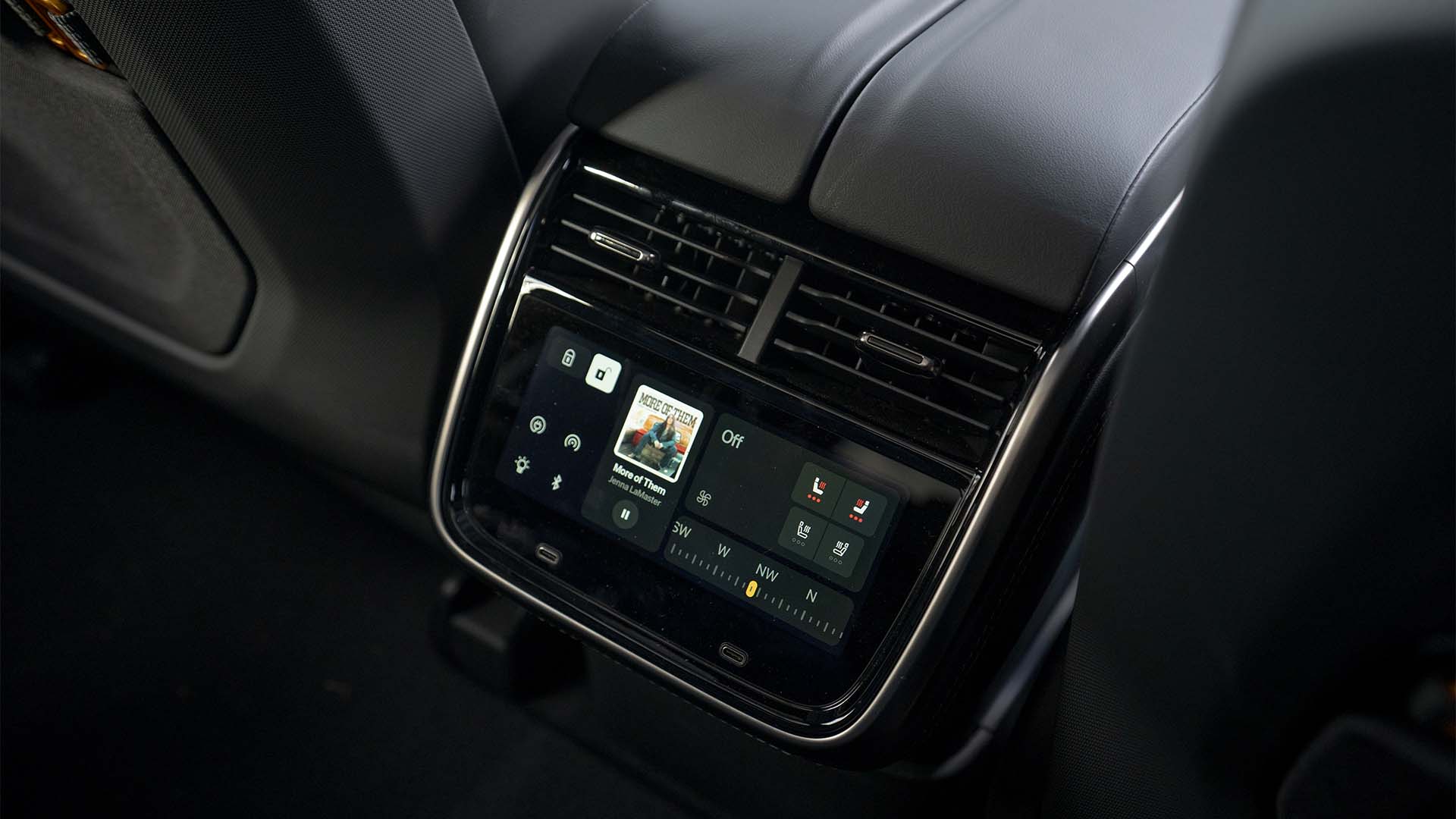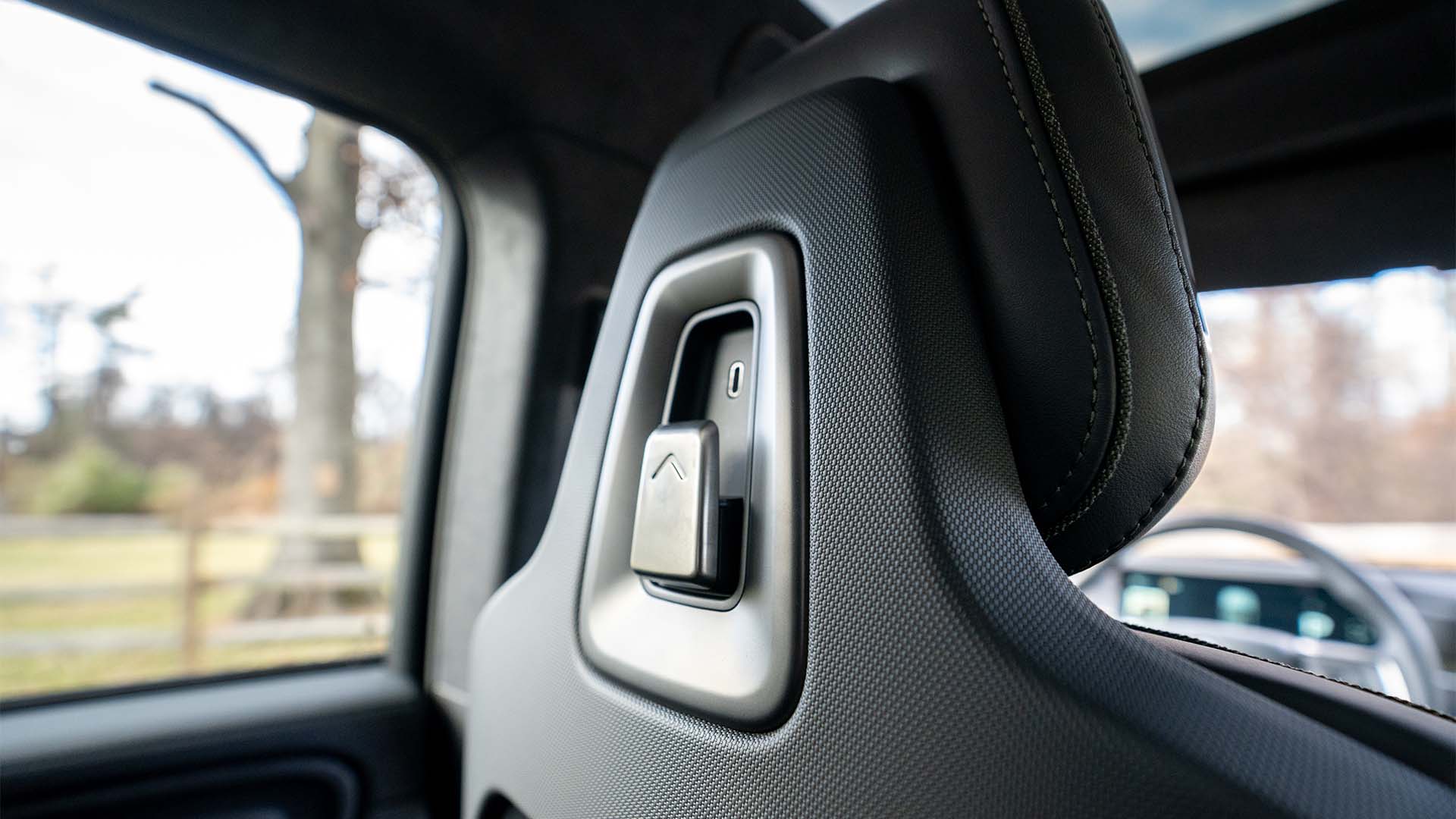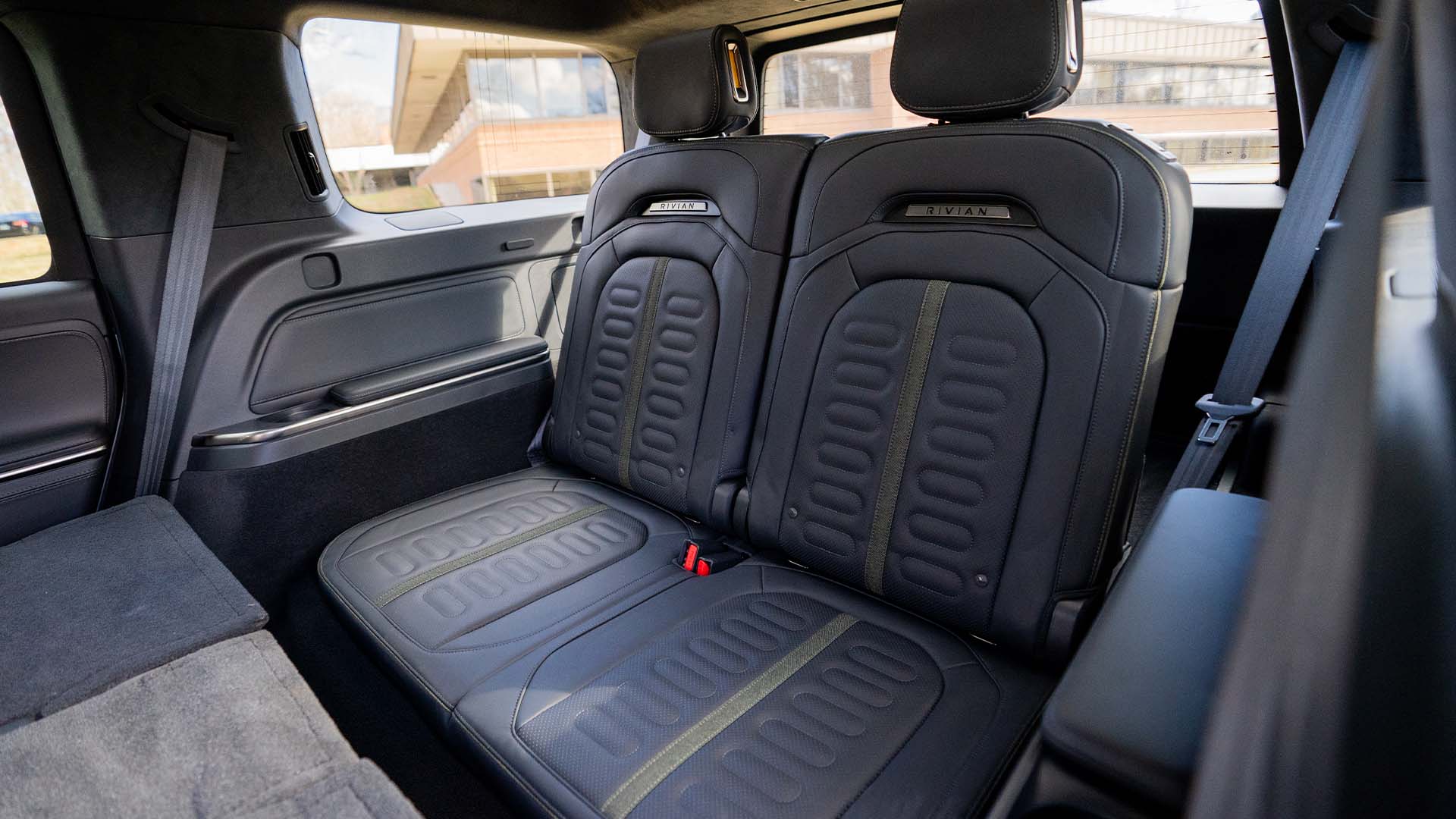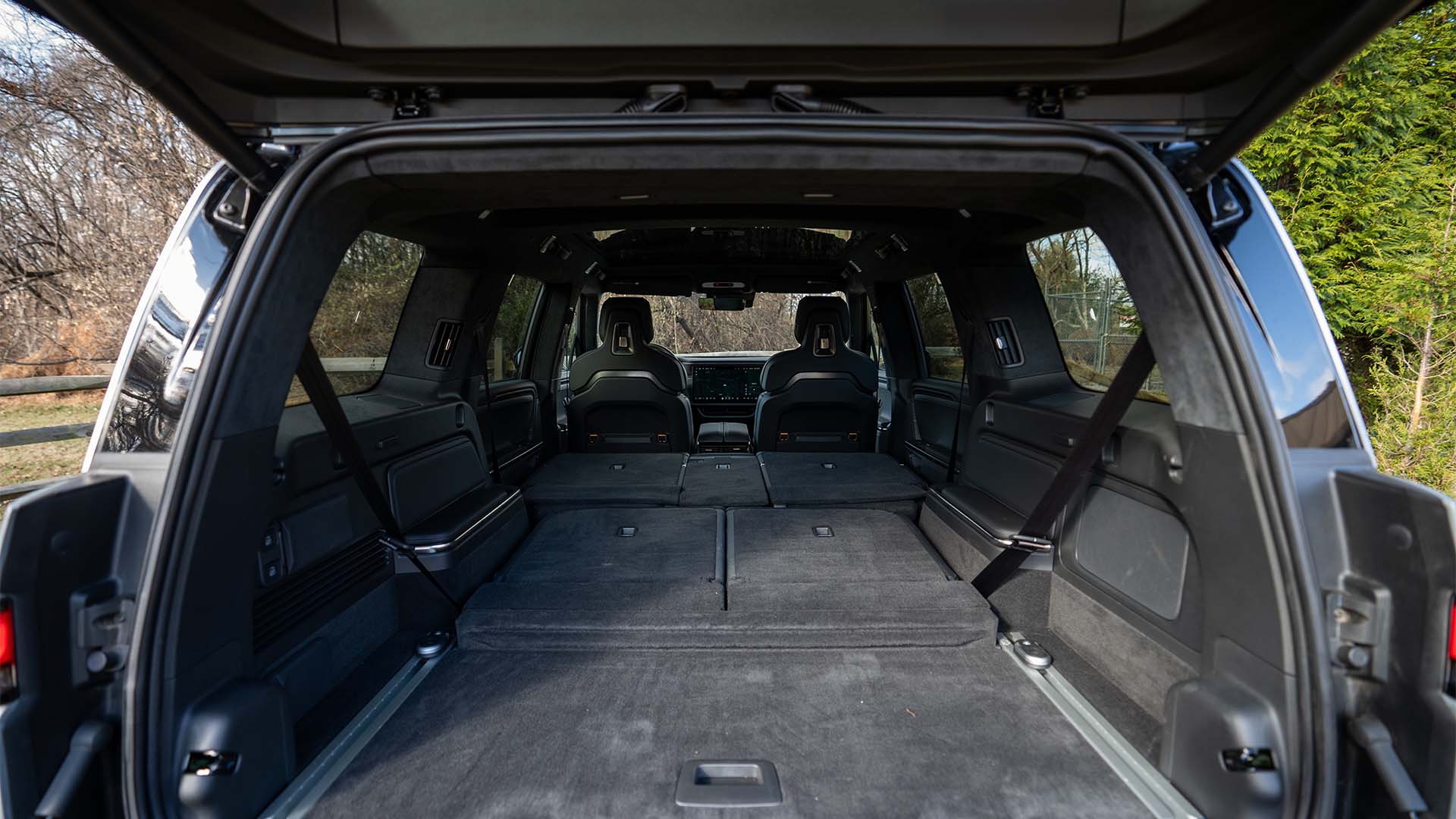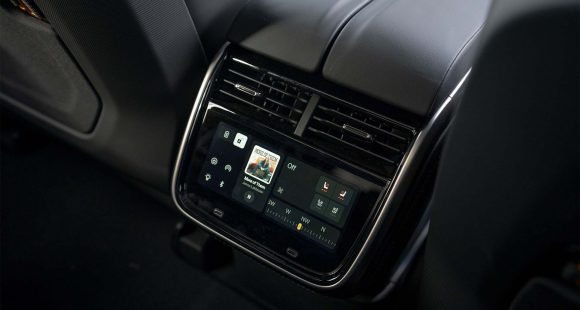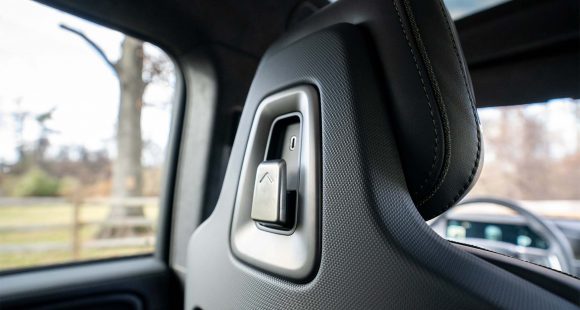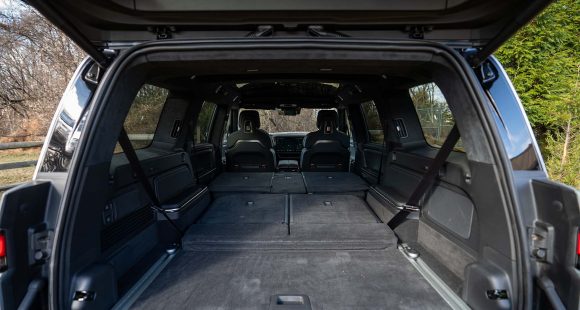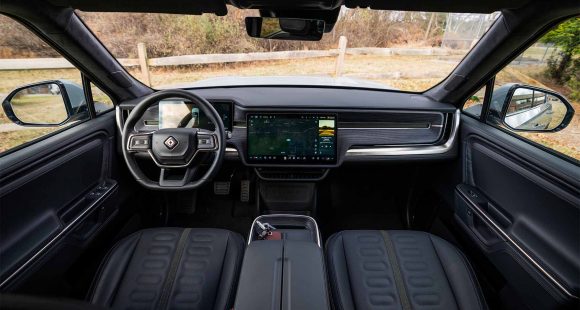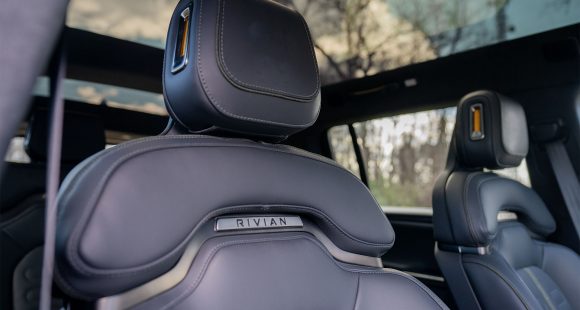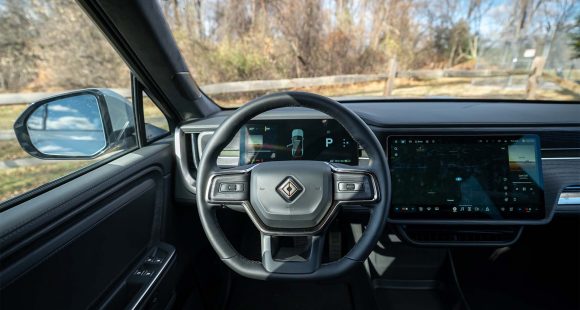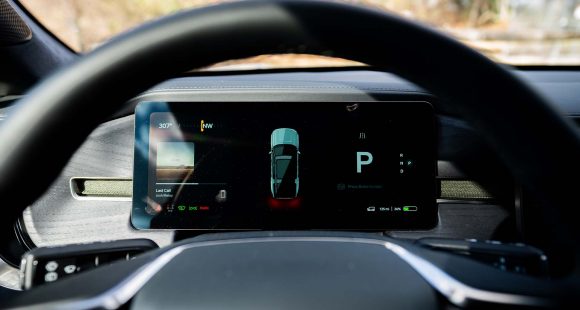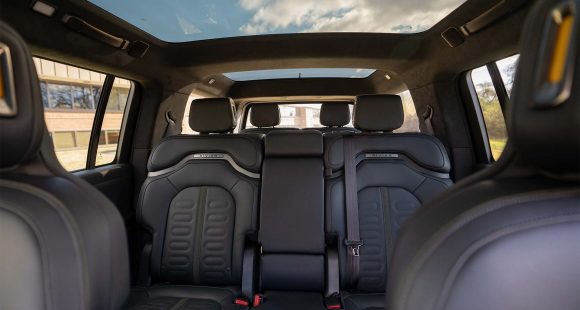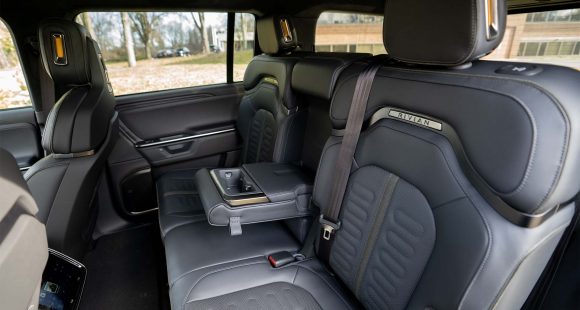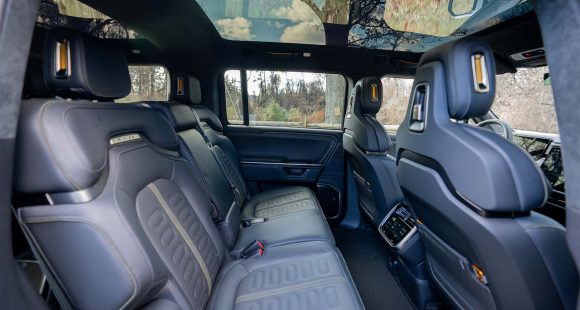2011 Chevrolet Cruze
For decades, Detroit’s automakers have been either unable or unwilling to sell world-class small cars in America. Too often their small cars were dumbed down to meet low cost and low expectations of a public that sees them only as basic transportation. Now, finally, we’re starting to see some of the great small cars Detroit builds for other countries come here. First it was the subcompact Ford Fiesta. And now it’s this car, the compact Chevrolet Cruze.
The 2011 Chevrolet Cruze is already sold in some 60 markets other than North America, where it plays the role not of commuter car, but of mainstream family sedan. So, while technically a compact, like the Cobalt before it, the Cruze is big for its ilk. At 181.0 inches in overall length, it’s six inches longer than a Toyota Corolla.
From its familiar two-tiered Chevy grille to its thickset back-end, the Cruze exudes a taut international profile and an overall look that’s substantial, but also very safe. Substantial too are Cruze wheels and tires with standard 16-inch and optional 17s and 18s.
The Cruze powertrain line-up will surprise many. Most trims are fitted with a trick 1.4-liter variable-timing, turbocharged I-4 rated at 138 horsepower and 148 pound-feet of torque. Only the base Cruze LS uses a non-turbo 1.8-liter ECOTEC with 138 horsepower and 123 pound-feet of torque.
 The LS and high mileage Cruze ECO models come with a standard six-speed manual, while others start and end with a six-speed manual-mode automatic.
The LS and high mileage Cruze ECO models come with a standard six-speed manual, while others start and end with a six-speed manual-mode automatic.
That provides Cruze with Government Fuel Economy ratings of 24 city/36 highway using regular gas. We saw a solid 31.5 in real-world driving. Cruze Energy Impact Score is a modest 12.2 barrels of oil consumed per year, with a smallish Carbon Footprint of 6.7 annual tons of CO2 emitted.
But hypermilers will be more interested in the Cruze ECO due later. With a slew of aero upgrades, it will bare a highway rating of 42, more than the smaller Ford Fiesta. There are even more surprises inside.
The interior of the Chevy Cruze is a real game changer. Not only is it very quiet, and near mid-size in roominess, the quality of materials is impressive. Instead of acres of hard plastics, you’ve got soft materials on the face of the dash and the doors. And over here, around the center console and the center stack, expensive-look ‘piano black’ accents. That’s not what I would expect to find in a moderately priced compact car.
This edition of Chevy’s cockpit interior theme is very handsome, although some felt slightly penned in by it. The easy scan motorcycle-like gauge cluster with trip computer screen fits well. Seats are comfortable, nicely bolstered, with good lower back support. Our 2LT trim added leather and heat. All Cruze models are well-equipped with air, six-speaker CD/XM-stereo, keyless entry, and lots of cupholders and storage options. And for safety, Cruze wears OnStar and an impressive 10 airbags, including two rear seat side bags.
The rear seat offers ample room for three, although leg room is less than we’d hoped. But fold the 60/40 seat backs and the trunk’s already huge 15 cubic feet of space grows exponentially. So it may be world-class in design, but does it drive that way too?
 With no notable turbo lag, initial throttle response is great. But, tall gearing bogs things down from there. Still, a 0-60 of 9.2 seconds is within expectations for an economy sedan. The quarter mile passed in a lazy 17.1 seconds at 82 miles per hour with mostly smooth shifts.
With no notable turbo lag, initial throttle response is great. But, tall gearing bogs things down from there. Still, a 0-60 of 9.2 seconds is within expectations for an economy sedan. The quarter mile passed in a lazy 17.1 seconds at 82 miles per hour with mostly smooth shifts.
High strength steel gives the Cruze a solid platform to mount a front strut, and rear torsion beam suspension. Engineers added a centering Watts Linkage, here called Z-Link, for added roll and lateral control. Traction and Stability Control are standard.
Surprise again, the Cruze scoots through the cones with the kind of agility you expect from a car designed for Europe and beyond. Understeer is moderate and consistent, with good steering feedback. The driver can actually concentrate on having a little fun. Overall, Cruze handling is safe and solid.
The Cruze is fitted with ABS front discs and rear drums standard, with all-disc an option. Our car’s disc/drum combo averaged an acceptable 129 feet from 60 to zero. Reaction was stable and the pedal reasonably firm. On normal roads, Cruze ride quality is also solid. It conveys the quietude of a premium-level vehicle. Cruze prices are higher than the outgoing Cobalt, but they’re still very reasonable. The Cruze LS starts at $16,995, the LT at $18,895, and the LTZ at $22,695.
The success of the 2011 Chevrolet Cruze is critical to GM’s long-term global prosperity. Fortunately, it beat all of our expectations, and then some. It’s a well-equipped, roomy, high quality, small car that should make even the most dyed-in-the-wool import buyers take a long and hard second look.
Specifications
- Engine: 1.4-Liter Variable-timing, Turbocharged I-4
- Horsepower: 138
- Torque: 148 Lb Feet
- 0-60 MPH: 9.2 Seconds
- 1/4 Mile: 17.1 Seconds @ 82 MPH
- 60-0 MPH: 129 Feet
- EPA: 24 MPG City/ 36 MPG Highway
- Mixed Loop: 31.5 MPG
- Energy Impact 12.2 Barrels Oil/Yr:
- CO2 Emissions: 6.7 Tons/Yr
2025 Rivian R1S
Major Reboot for Rivian R1S
With just about every mainstream carmaker now onboard with battery-electric vehicles, EV-only brands are hoping there are still plenty of people out there willing to think outside the box. So, let’s see if Rivians latest R1S utility can make the case for taking the EV road less traveled.
Big changes have happened in the short time since the Rivian R1S first hit the streets three years ago. As for 2025, there are updates that touch just about every aspect of the vehicle. Yes, despite looking almost exactly the same outside, Rivian claims that beneath the surface, their entire electrical architecture has been significantly updated, eliminating a whopping mile and a half of wiring and 10 computer assemblies, allowing for more efficient operation.
But look closely and you will see their signature vertical oval headlights are updated with a new matrix of LED lights that can cycle individual elements on and off to provide maximum illumination where you need it without distracting oncoming drivers.
Not much change in the look of the interior either, but the synthetic leather upholstery is still very nicely done, though most touchpoints feel more rugged than luxury minded. With the exception of a couple controls on the steering wheel, you do still have to do almost everything on the R1S’s 15.6-inch touchscreen, but the user interface has been improved. So, while we do wish they could have reverse-engineered a knob or two into the mix, we realize full touchscreen interface is just what people expect in their high-end EVs these days, and at least it works better than before. And the gauge display still wows you with the amount of information it displays and is mounted high enough that no additional head-up display is needed. A new Rivian Autonomy Platform uses 11 cameras, five radars and A.I. for self-driving, or just to monitor what’s going on around the vehicle even when it’s parked.
This [EV] really feels fast, sitting you up high and throwing you back in your seat with authority.
Rivian has also given the R1S a substantial suspension revision with new spring rates, bushings, and mounts; along with new tuning for the adaptive dampers and roll-mitigation system. It does provide a more balanced street attitude, but it still rides like a truck. That’s great if that’s the experience you’re looking for; not as ideal if you’re looking for more of the smooth luxury-style treatment.
All R1Ss are all-wheel drive, but there’s a wide variety of powertrain options including a new Tri-Motor setup. Outputs range from the standard Dual-Motor’s 533 horsepower to the Quad-Motor’s impressive 1,025. There are several battery packs as well, delivering as much as 410 miles of range, giving the R1S the highest rating of any SUV on the market right now. Our Adventure trimmed tester featured the 665-horsepower Performance version of the Dual-Motor arrangement, with the Max battery and 20-inch wheels with all-terrain tires.
Theoretically, that setup is rated for 370 miles, but perhaps we were enjoying the “performance” theme too much as our results were well short of that, using 68% of the battery to drive only 189 miles, putting our estimated range around 278 miles. Using 43 kilowatts of electricity for every 100 miles earns the R1S a fair efficiency rating.
But all was forgiven at our Mason Dixon test track when this Rivian started blasting us to 60 in 3.8 seconds. Yes, there are faster EVs, but this one really feels fast, sitting you up high and throwing you back in your seat with authority, while the rear of the truck squats down substantially before hurling you off the line and down the track. Power delivery stayed strong the entire time, cranking away until we cleared the quarter-mile in 10.5 seconds at 108 mph.
Despite this utility’s substantial size and weight, we were able to keep a pretty fast pace through the cones of our handling course. The all-terrain tires obviously didn’t grip the pavement as well as all-seasons would, but the low center of gravity kept things very flat. Yes, it does feel very heavy, but the brakes were more than up to the task, stopping us from 60 mph in a very short 103 feet with surprisingly little nosedive and no fade.
Pricing starts at $77,700 for the Dual-Motor with Standard battery pack; our Dual-Motor Performance with the Max battery and All-Terrain Package came in just over $102,000.
While Rivian has had great initial success; sustaining that success will be a much tougher task. But, if they continue to put as much effort into improving their products as they have here with the 2025 R1S, we think their winning streak will only accelerate.
Specifications
As Tested
- Motor Setup: Dual Motor
- Battery Size: 141.5 kWh
- Horsepower: 665
- Torque: 829 lb-ft
- EPA Range: 370 miles
- 0-60 mph: 3.8 seconds
- 1/4 Mile: 10.5 seconds at 108 mph
- Braking, 60-0 (avg): 103 feet
- MW Test Loop: ~278 miles







